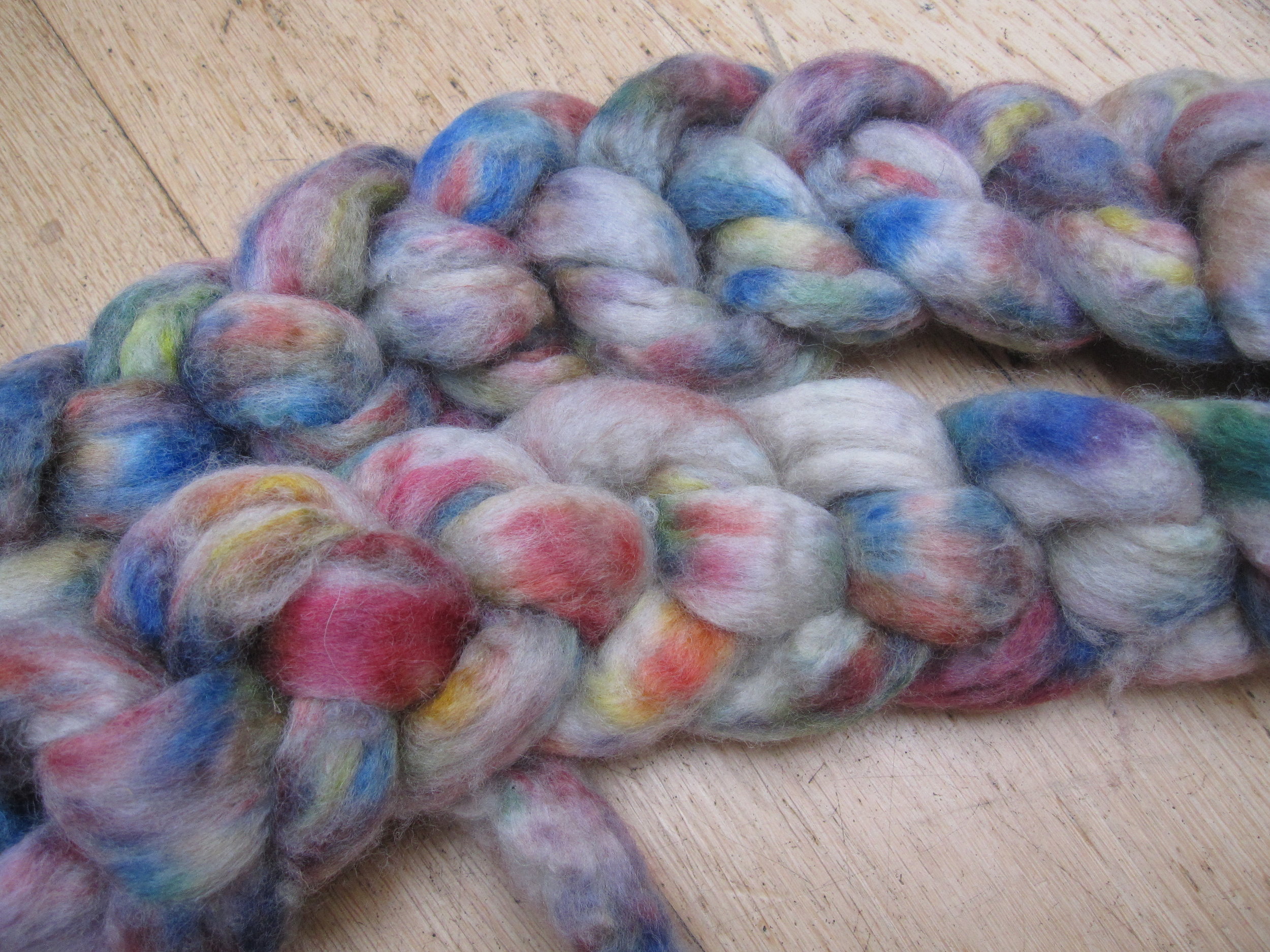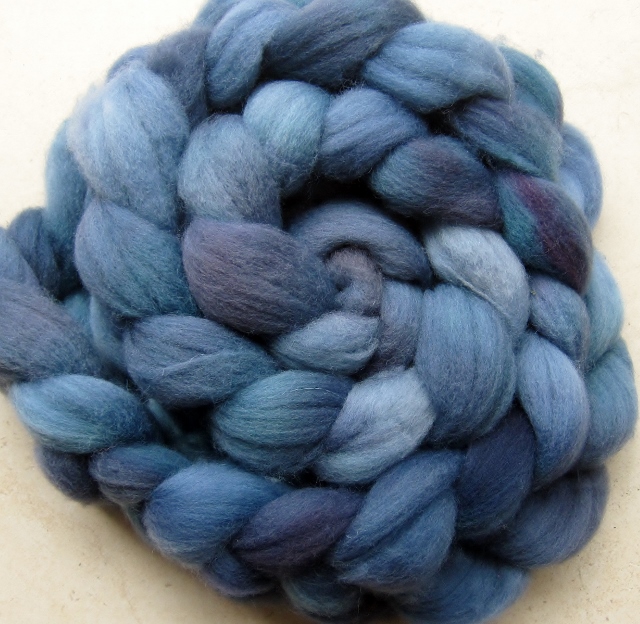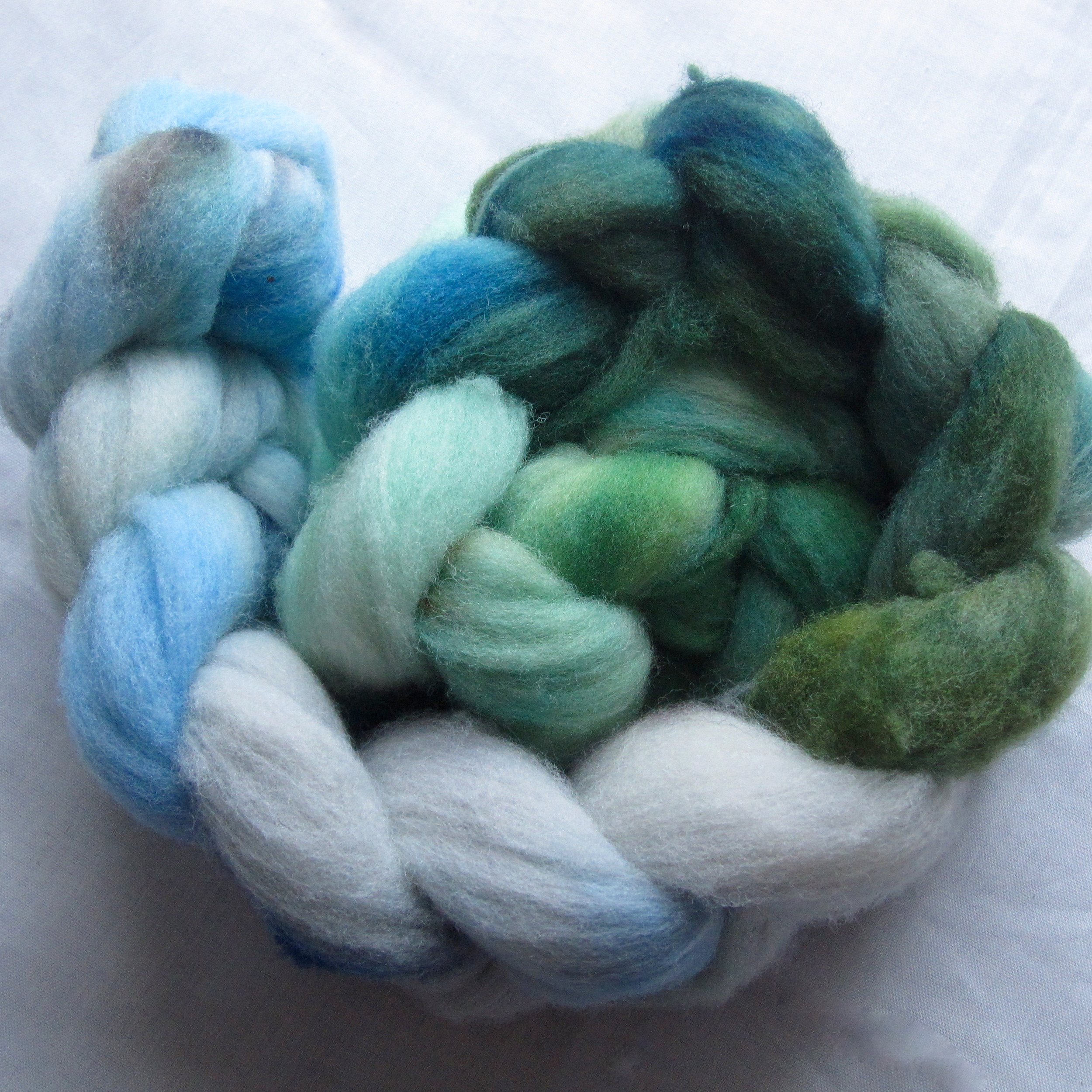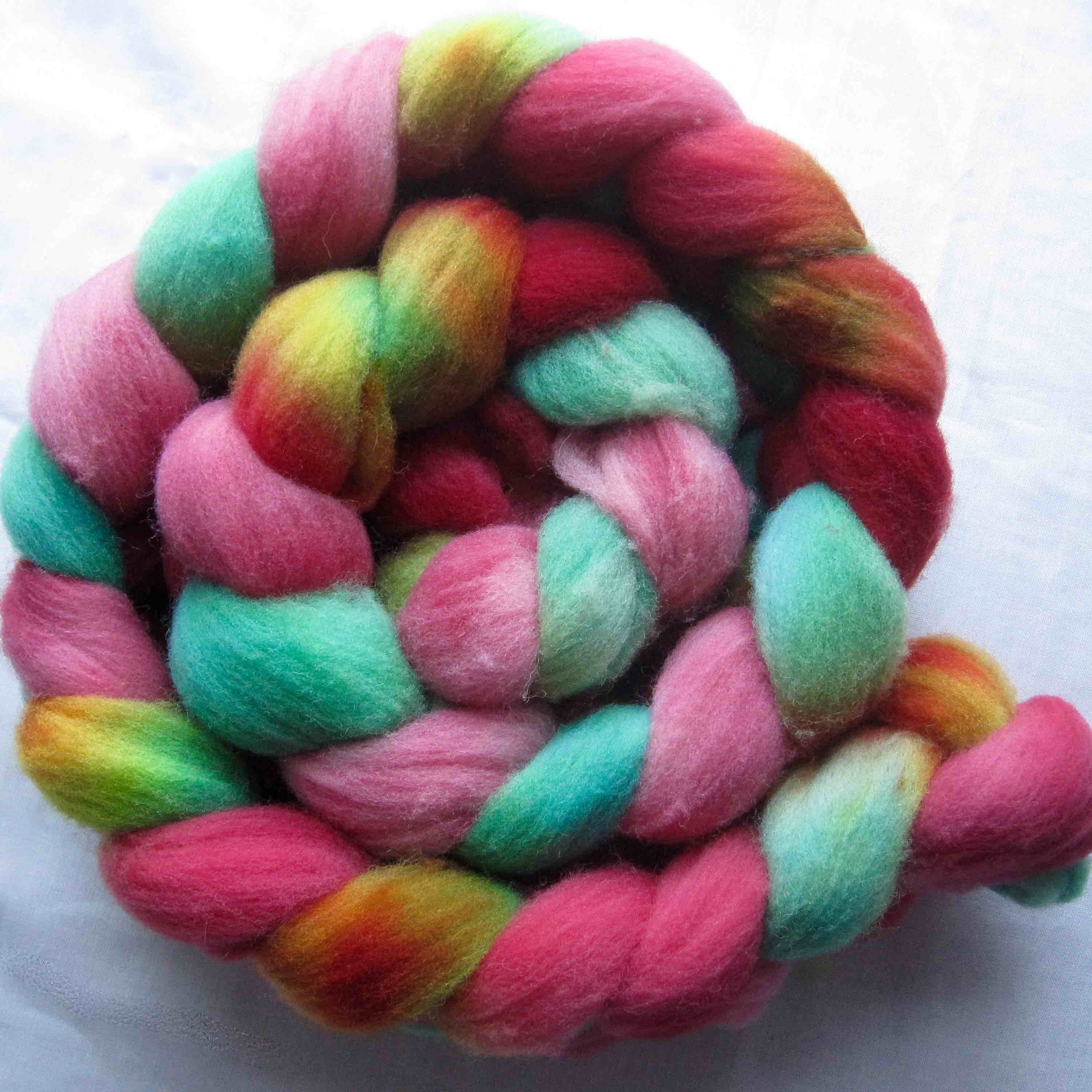Trying new things
Over the past weeks as I've been preparing for Yarndale at the end of the month, I've been playing around with some new dye techniques, and finding some fantastic ways to put colour on fibre!
Back on the podcast a little while ago, Allison suggested that I should try speckled fibre. As someone who has been slow to get on the speckled yarn bandwagon, I was a little bit dubious as to how that would look on fibre and then again as handspun yarn, but I've been trying it out and I am really pleased with the results!
Sand Creatures on Merino d'Arles
Sand Creatures as a 2-ply
What's even more interesting is that the speckles on the fibre in Sand Creatures ended up blending in the handspun yarn in ways I didn't expect.
I'm really looking forward to seeing how these colourways look spun up in different ways as other spinners put their own touches on them.
While the process I've developed for speckled fibres is more time-consuming than my standard dye process, it does allow me to layer on colours in ways that end up very unexpected sometimes!
Anakinra, the August Lab Goddess Fibre Club colourway
I'm working on a few more different variations in the run up to Yarndale (including [left] Sunshower on BFL and [right] Gorse on Superfine Falkland), so if you're intrigued, please come by and have a squish in person! I'll be on Stall 163, and I hope to see you there!






















